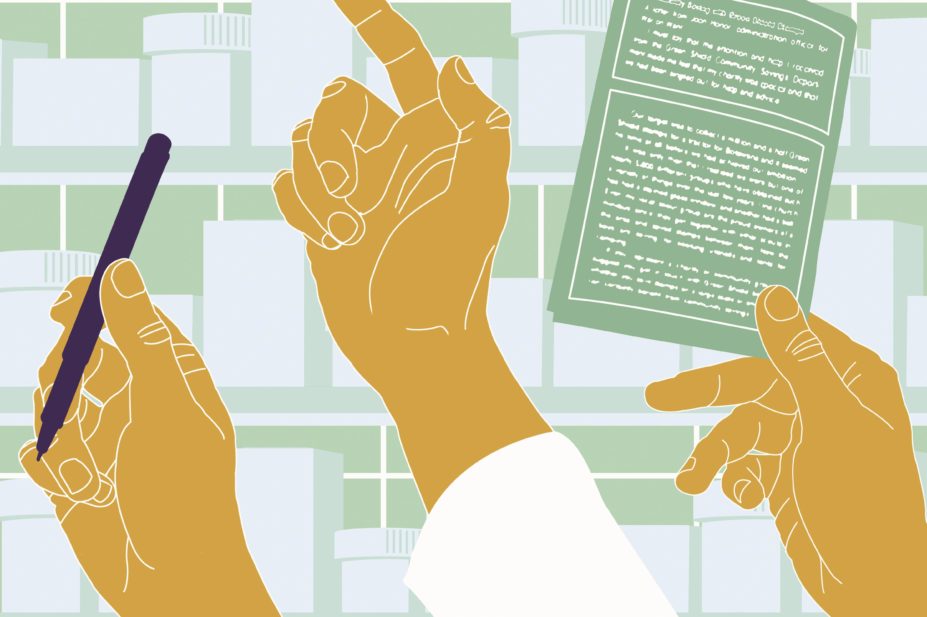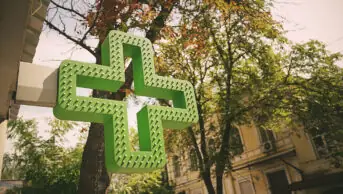
Ikon Images / Rex Features
If you have been anywhere near a pharmacy magazine, website or newsletter in recent weeks you will probably have heard about the results of the evaluation of the new medicine service (NMS). Positive from both a patient and an economic perspective, they make for positive reading and are a well deserved result for the pharmacy teams that have been grafting away trying to identify patients, chasing follow-up appointments and offering the best possible advice.
However, unless all community pharmacy contractors and their staff get behind providing the NMS to eligible patients, the initiative will never reach its full potential and neither will the sector.
The researchers of the report note that more than 90%[1]
of community pharmacies in England have now provided the NMS at some time since its introduction nearly three years ago. This is impressive and shows how well staff in community pharmacies can respond and deliver services with a more clinical focus when given the opportunity.
However, the figure does not chime with those provided by the NHS Business Services Authority (NHS BSA). The NHS BSA processes payment claims for the NMS and each month it publishes figures showing how many pharmacies have made claims. Its most recently published figures confirm that, by May 2014, 10,673 pharmacies in England had at some point provided the NMS[2]
.
Where things become interesting, though, is when you delve into the monthly payment figures. These show that, on a monthly basis, a considerable proportion of those 10,673 pharmacies are not claiming payment for the NMS — in fact the average number of pharmacies claiming in each month for 2013/2014 was 6,744. There are currently around 11,500 pharmacies in England
[3]
, so just under 60% of those are delivering the NMS each month, a calculation confirmed by the Pharmaceutical Services Negotiating Committee (PSNC).
Of course, not all pharmacies will be able to provide the service to the same level each month and it may well be that unpredictable things get in the way for some pharmacies, such as a local campaign that needs to be promoted or a lull in eligible patients walking through the door. But 40% is a substantial proportion of pharmacies to be affected in this way each month and it means that, although many pharmacies are delivering the NMS, there are some that are not.
If community pharmacy does not continue adding value to its core dispensing function then it will fall under greater scrutiny of commissioners who are making decisions on spending with increasingly limited resources
In my work as a PSNC regional representative and a local pharmaceutical committee member, I come into contact with contractors from these pharmacies. These people often ask me why I am supporting initiatives such as the NMS rather than trying to get them more money for dispensing, or why I assume that pharmacists would want to deliver clinical services in the first place. For them, services like the NMS are not a priority and they may opt out of providing the service due to lack of time and resources.
We might argue that these people are in the minority, but when you consider up to 40% of pharmacies are not providing the NMS each month, they make up a significant chunk of the sector. So is the 90% figure really enough? All who work in community pharmacy should be behind this service. As regulated healthcare professionals, providing the best service possible to patients must be the most important thing pharmacists aim for. How can contractors and pharmacists possibly argue that providing patients with a service that helps them get more out of their medicines — however safe and efficient the dispensing process may be — is not something we should be doing?
Of course there are those who will point out that, although we are healthcare professionals, we also should be able to make a fair living. They are correct, but even from a business perspective the NMS makes sense. The government remains clear that there can and will be no extra funding for the health service for the foreseeable future, but that it expects the NHS to continue improving the care it provides. This means healthcare commissioners are thinking about every penny spent and increasingly they want to know precisely how much bang they will get for their buck, whether that is through reduced admissions, saved GP appointments or better patient outcomes.
If community pharmacy does not continue adding value to its core dispensing function — that is, advising patients to help optimise their use of medicines and making clinical or public health interventions — then it will fall under greater scrutiny of commissioners who are making decisions on spending with increasingly limited resources. Pharmacy needs to demonstrate its worth beyond medicines supply and, as the evaluation has shown us, the NMS enables us to do that.
Economic analyses like the one just published are invaluable in making the case for the development of community pharmacy services and securing the sector’s future. So I would challenge pharmacy contractors to embrace the full range of pharmacy services and ensure their pharmacists and staff have the necessary support and guidance to provide services such as the NMS consistently and regularly. And as for those who say that pharmacists should not be offering services, they are hindering those who are actually providing the service — I believe it is up to the rest of us to help persuade them to our way of thinking.
Gary Warner
is chairman of the Pharmaceutical Services Negotiating Committee’s Service Development Subcommittee.
NMS in numbers
10,673: the number of pharmacies who had made payment claims for the NMS by May 2014
1.78 million: the number of NMS provided between October 2011 and May 2014
63,646: the average number of NMS provided each month in 2013/2014
9: the average number of NMS provided by those pharmacies claiming payment for it each month in 2013/2014
10%: the increase in adherence when the NMS is provided rather than standard community pharmacy practice
80%: the proportion of patients achieving a successful medicines outcome when they receive the NMS (as measured by the Morisky Eight Item Medication Adherence Scale)
References
[1] Elliott RA, Boyd MJ, Waring J, et al. Department of Health Policy Research Programme Project: Understanding and appraising the new medicines service in the NHS in England. The New Medicine Service Study, 2014. (accessed 20 August 2014)
[2] NHS Business Services Authority. Complete New Medicine Service (NMS) Data. Available from: http://www.nhsbsa.nhs.uk/PrescriptionServices/3545.aspx (accessed 20 August 2014)
[3] Health & Social Care Information Centre. General Pharmaceutical Services in England — 2003–2004 to 2012–2013. Available from: http://www.hscic.gov.uk/searchcatalogue?productid=13373&topics=1%2fPrimary+care+services%2fCommunity+pharmacy+services&sort=Relevance&size=10&page=1#top (accessed 20 August 2014)


